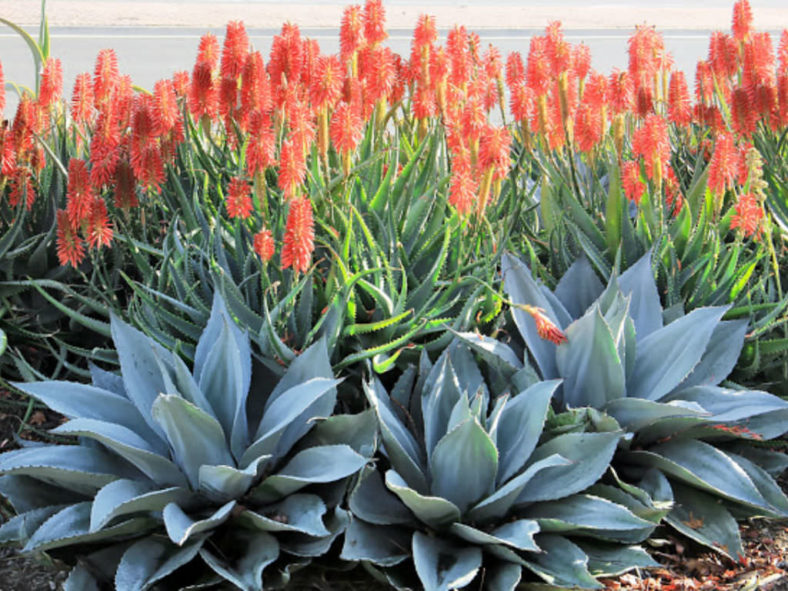Aloe and Agave are two genera of succulent plants with similar appearances and care needs. The similarities arise because both are adapted to live in hot, dry climates. However, Aloe and Agave are not closely related, and the climates in which they evolved are similar but in different hemispheres.
Classification
Aloe is a genus in the family Asphodelaceae. Its members have juicy leaves arranged in a rosette. Agave, however, is a member of the family Asparagaceae.
Origins
Aloe is an "Old World" plant. The plants of this genus originally grew in sub-Saharan Africa, the Saudi Arabian Peninsula, and Madagascar. From there, Aloes spread along the Mediterranean coast and South Africa. Though Aloes grow wild in the southwestern United States, they are introduced species, not natives. Agaves, on the other hand, are "New World" plants. They originated in Mexico and the American Southwest. Today, they extend from Utah into northern South America, growing in deserts, arid grasslands, and oak-pine woodlands.

Aloes grow well in USDA Plant Hardiness Zones 9 through 11. Agaves grow in zones 9 and 10, with some varieties tolerating more heat or cold than the norm. Agaves can tolerate full sun, while Aloes like a bit of shade during the sunniest times of the day. Both plants do well in sandy or even rocky soil, as long as it is well-drained.
Form
It is easy to confuse Aloe and Agave at first glance, but some typical physical differences can help you distinguish between them. Agaves are generally larger and spinnier than Aloe. The spines on Agave are often painfully sharp, whereas the "teeth" that sometimes line Aloe leaves are usually soft to the touch.
For a sure-fire diagnostic, try snapping a leaf in two. An Aloe will break easily, allowing you to access the gel inside. On the other hand, Agave leaves are highly fibrous, and sharp shears are required to cut them.
Flowers
The flowers of Aloes are tubular, making them perfect for pollination by long-beaked birds. They grow in clusters atop long stalks and typically bloom in spring or summer. The flowers range in color from creamy white to orange, bright red, or purple.
Agaves also flower atop a long stalk that shoots up from the center of the rosette. This flowering structure, an inflorescence, is often as big as, or even bigger than, the plant that produces it. It carries a bushy grouping of flowers at the top. The resources the inflorescence takes are massive. Expanding them typically kills the plant. In other words, Agaves flower themselves to death. Consequently, they bloom only once, usually after 10 to 30 years, though sometimes after a much longer life, earning the common name "Century Plant."
Sources: sfgate.com, Mountain Crest Gardens
Links
- Back to genus Aloe
- Back to genus Agave
- Succupedia: Browse succulents by Scientific Name, Common Name, Genus, Family, USDA Hardiness Zone, Origin, or cacti by Genus